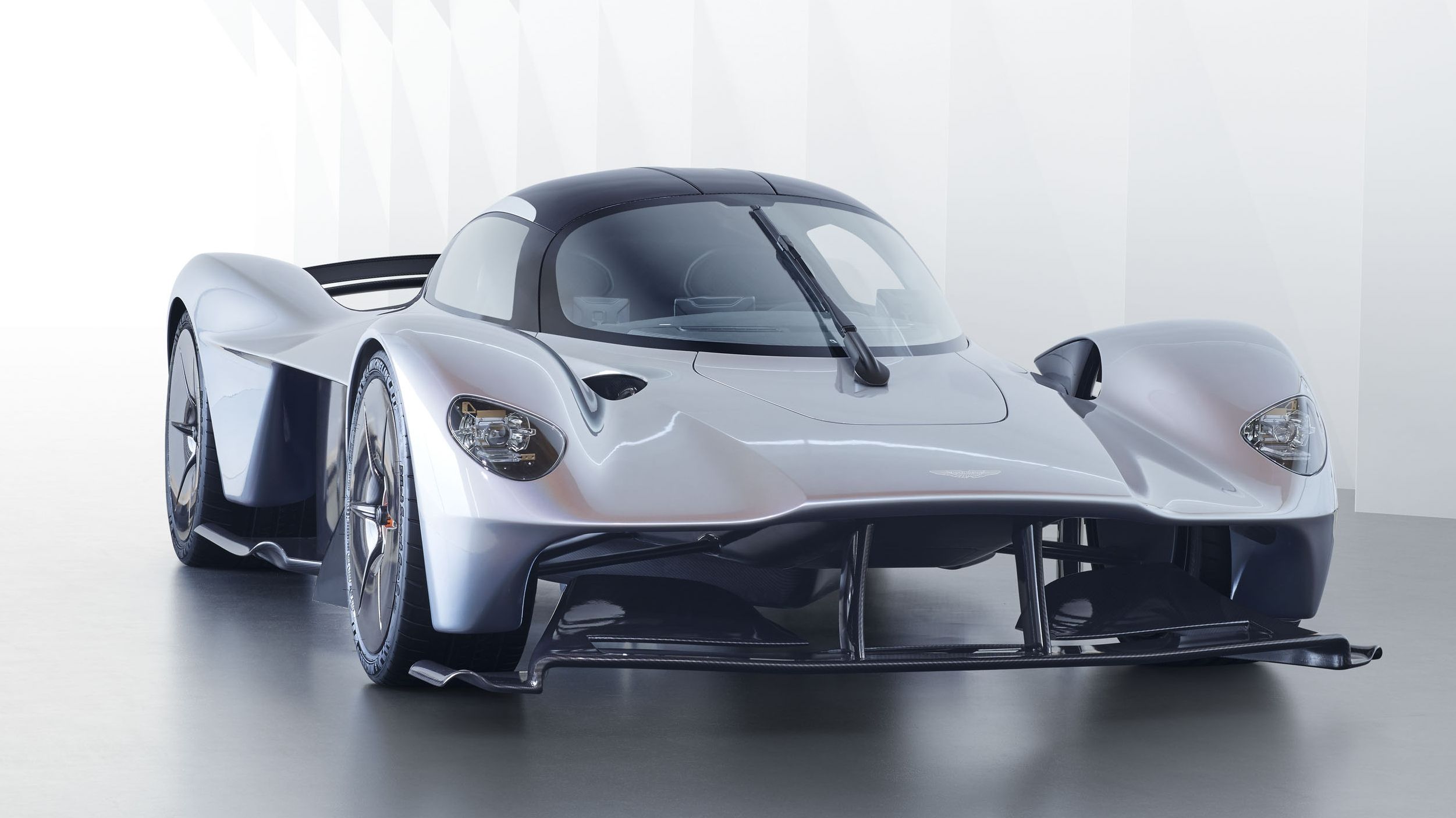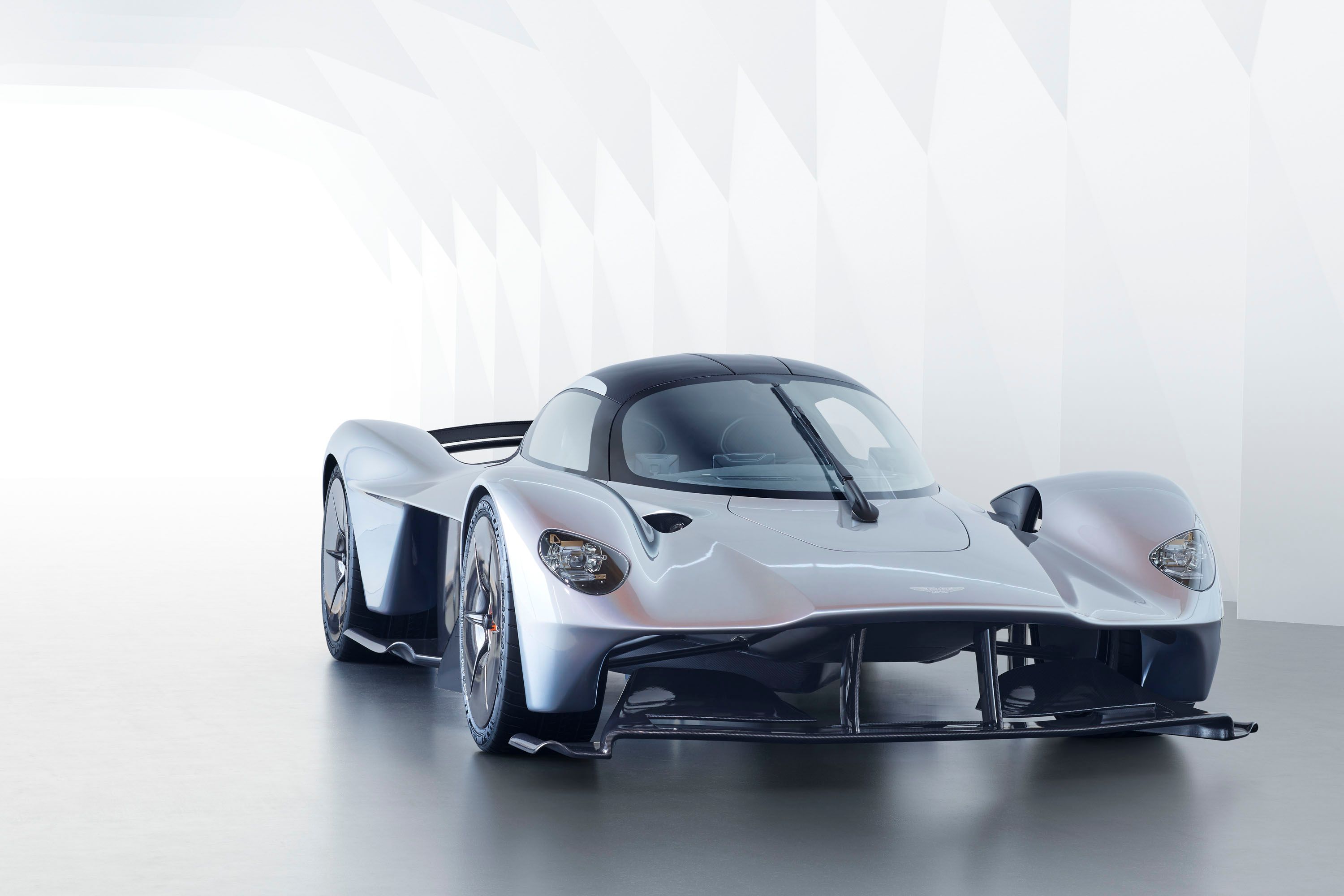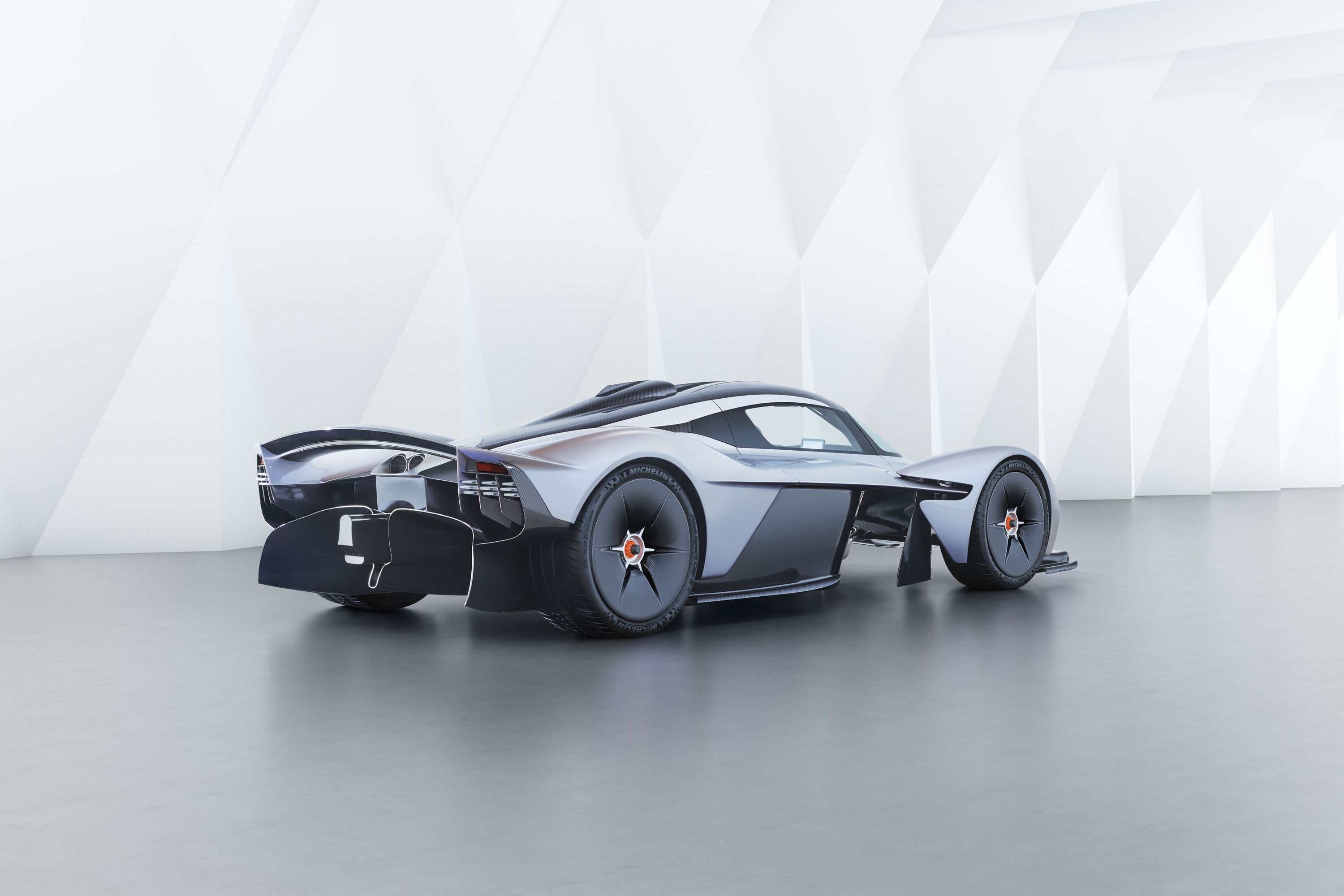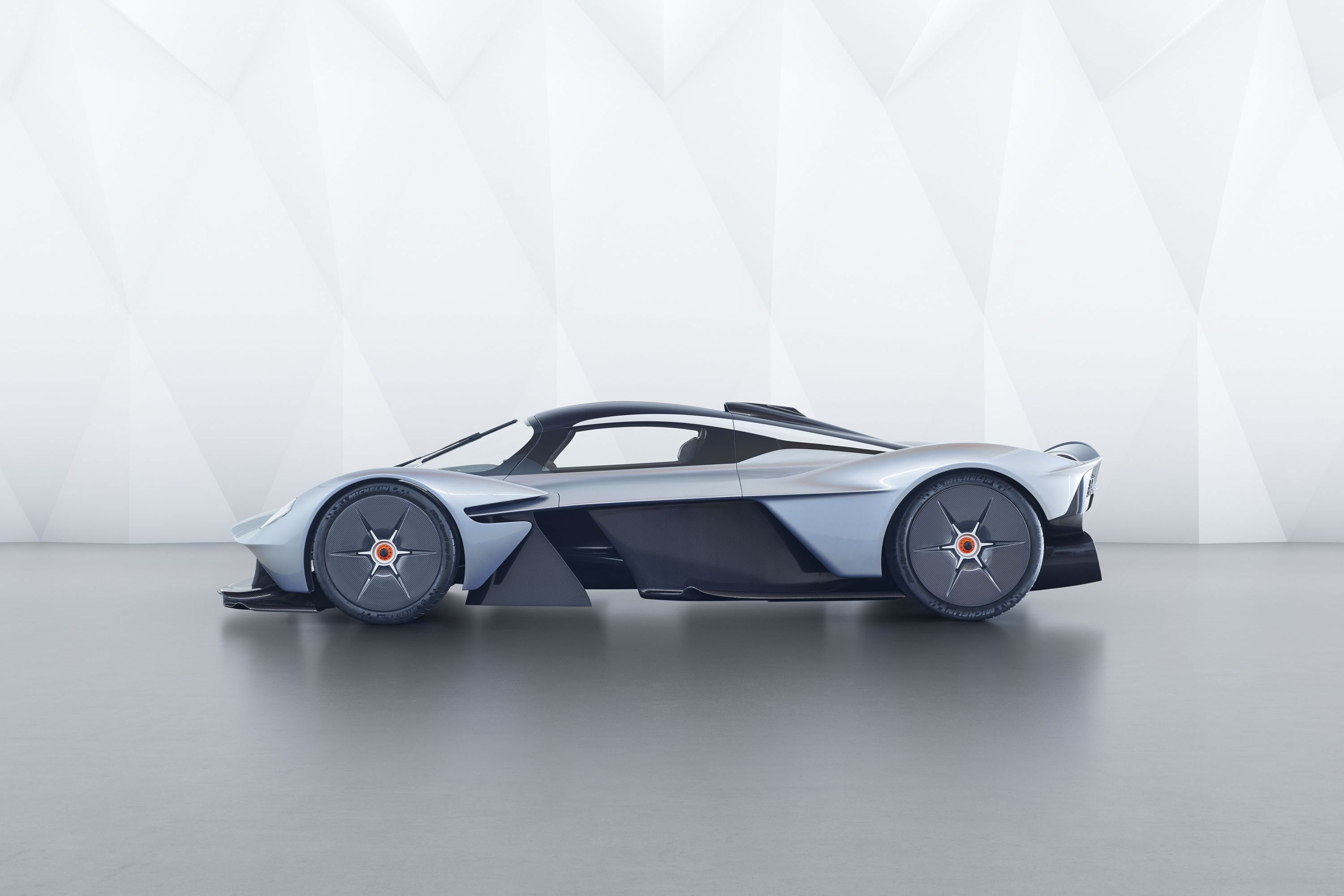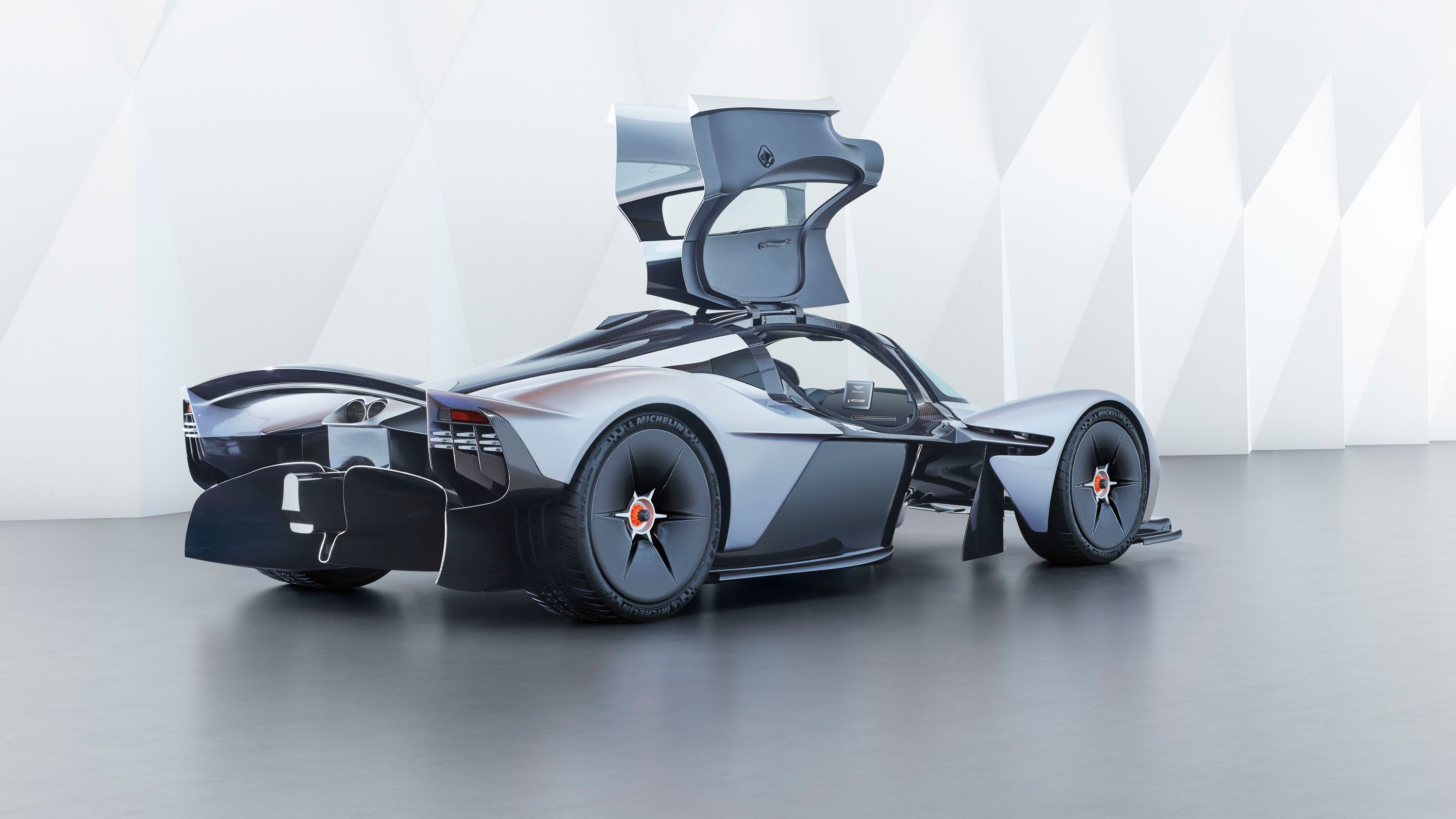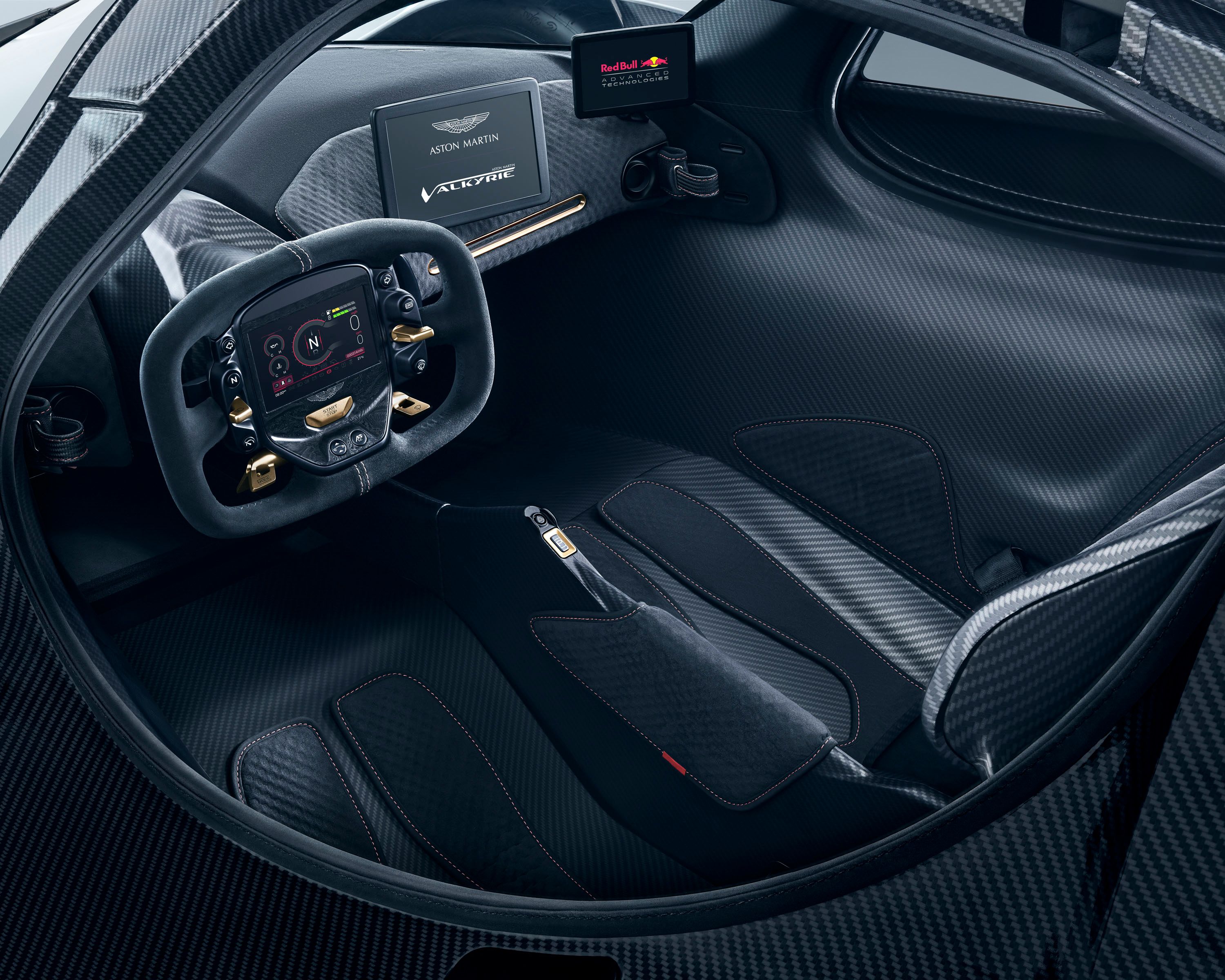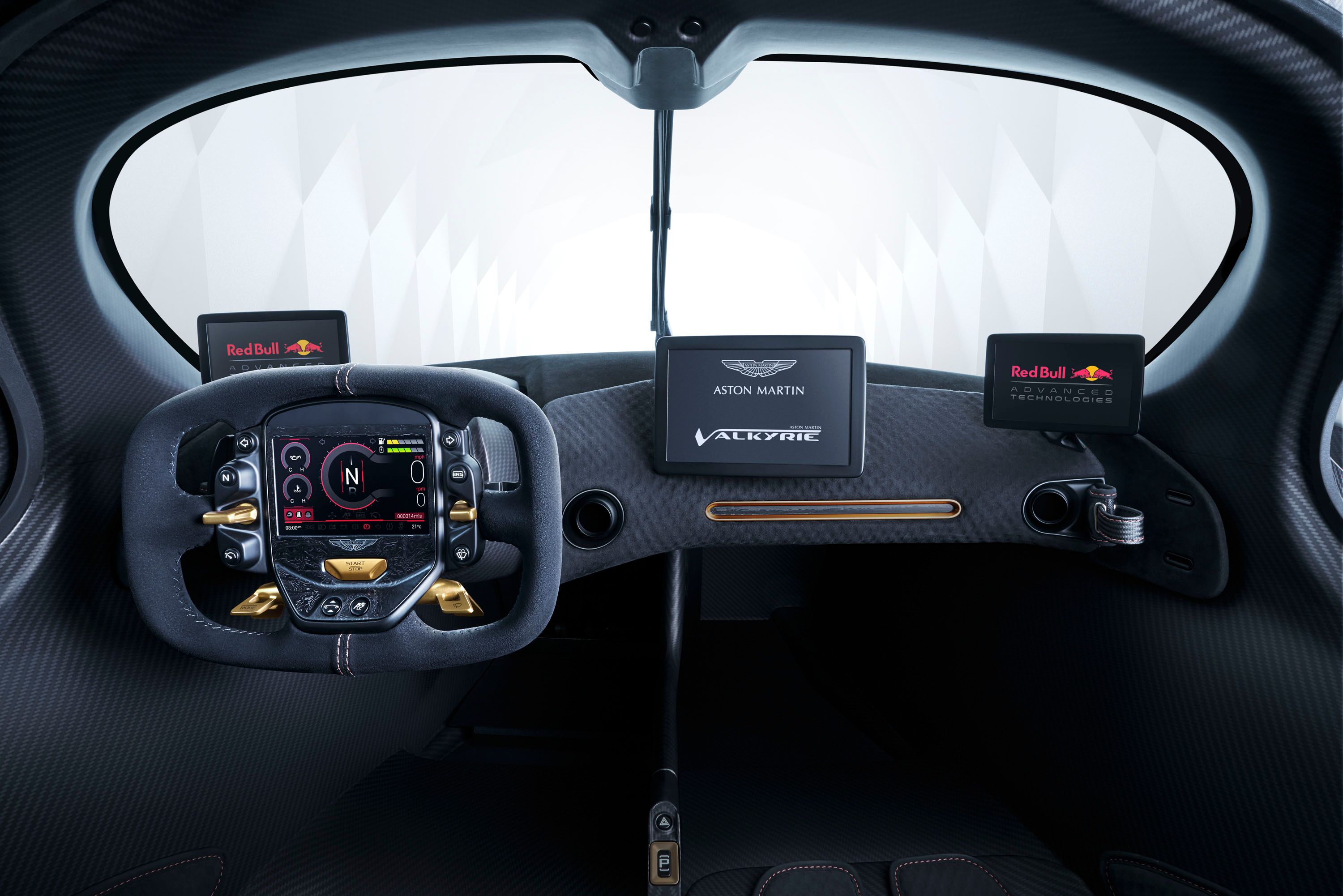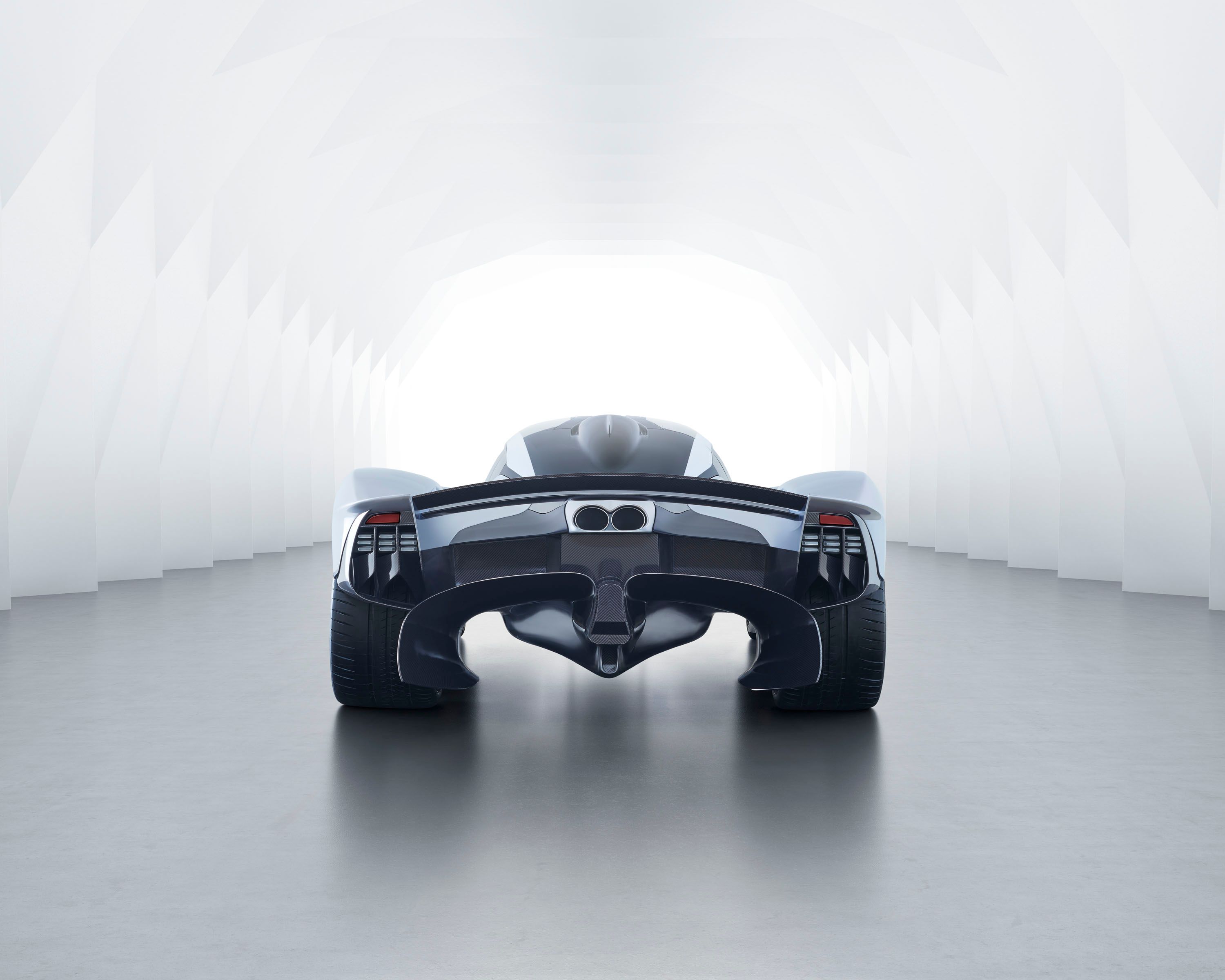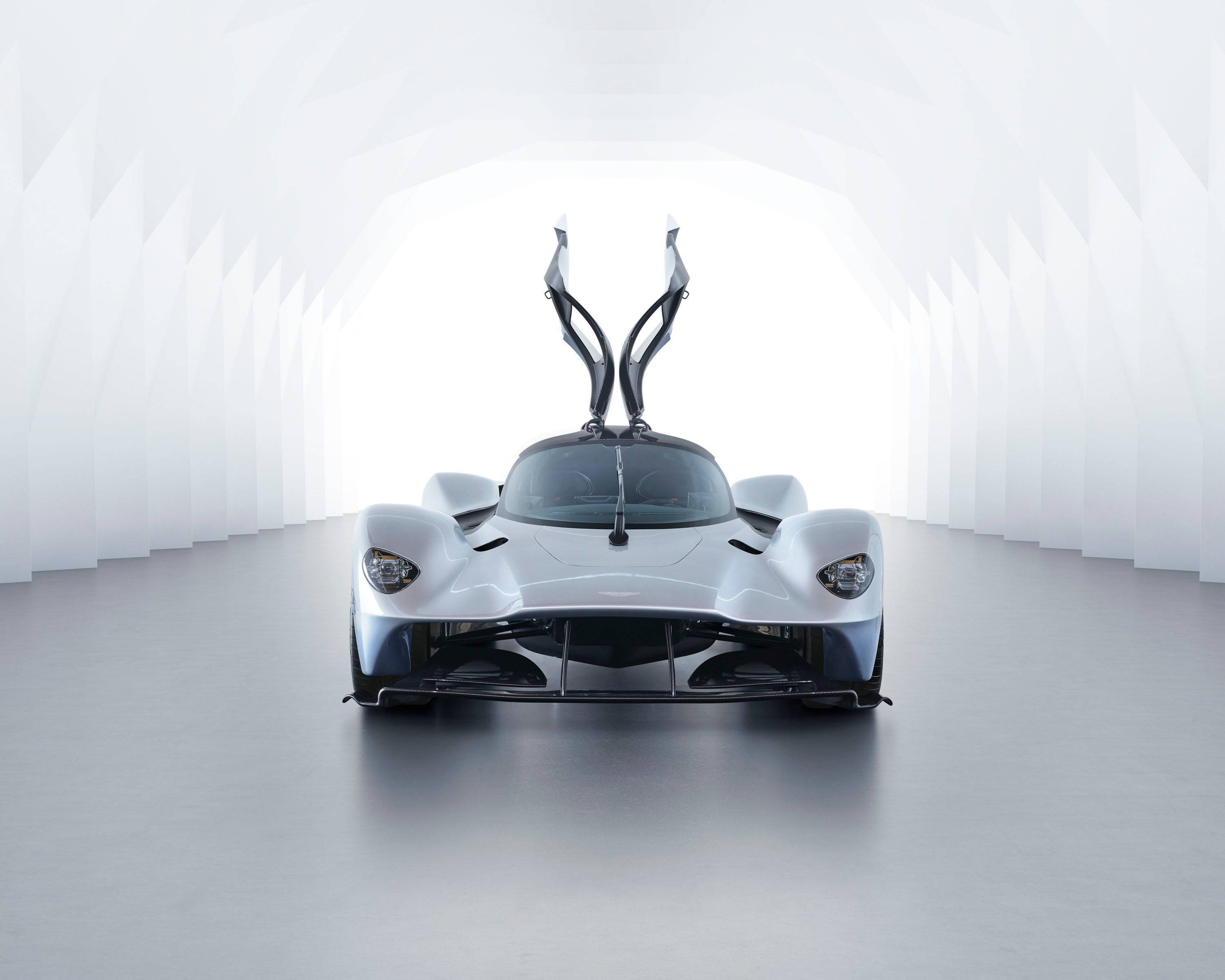Years of handwork between Aston Martin and Red Bull has finally led to this. The Aston Martin Valkyrie is getting closer and closer to completion and we now have what Aston Martin designer Miles Nurnberger describes as 95 percent of the car’s exterior design. Yes, the near-production version of the hypercar is here, and we’re just about to fall in love with.
The British automaker describes the latest iteration of the Valkyrie as a “further developed version” of the car that we last saw earlier this year at the 2017 Geneva Motor Show. At first glance, the differences between this updated version are evident compared to the previous version. The front end, in particular, looks considerably lighter, a by-product of Adrian Newey’s decision to incorporate new openings in the body between the cockpit and the front wheel arches. Turns out, this new design helps create more front downforce for the hypercar, enabling it to function at its maximum peak. No surprises then that Aston Martin decided to incorporate these changes into the car’s design. There are plenty more changes to the design of the Valkyrie, almost all of which were made to ensure that the car is as light as can be when it’s finally ready to make its world debut. Seems fitting then that we’re getting a good look at what could very well be the final design of the car because the version we saw at the 2017 Geneva Motor Show ago looks like a brute compared to this one.
Continue after the jump to read the full story.
What differences are there from the “old” version of the Valkyrie?
As I pointed out above, the front end of the Aston Martin Valkyrie has had a pretty noticeable evolution. Take a look.
Note: side-by-side photos of the new-look Aston Martin Valkyrie and the version of the hypercar from the Geneva Motor Show.
The fenders are smaller now and the car’s nose is a lot sharper than before. You’ll also notice there is a pair of small inlets on the hood, a feature that wasn’t there from the concept version that Aston Martin previewed in Geneva. Speaking of things that weren’t there, the concept had no headlights, a by-product of early design work that had yet to incorporate the headlight technology Aston Martin and Red Bull were planning for the Valkyrie. Take a look at the new photos and there they are now.
According to Aston Martin, these headlights are Formula One-inspired. That's a curious explanation considering F1 cars don’t really have headlights. In any case, these aren’t your typical supercar headlights as the low and high beam elements are said to be attached to an anodized aluminum frame, which in turn keeps them as light as possible. Aston didn’t say specifically how much they weigh, but it did estimate the whole setup to be 30 to 40 percent lighter than any series production headlamp configuration the company has ever used.
Move to the side of the Valkyrie and the changes are just as evident, including a much higher position of the car’s belt line compared to where it was in the concept version. In fact, the space between the belt line and the actual shoulder line of the Valkyrie is so thin on the near-production version, you might think the car actually has no doors. Of course, it does, though, and in keeping with the objective of making the Valkyrie as light as possible, check out how small and thin the doors look when they’re in full and upright gullwing position.
Note: photo of the Aston Martin Valkyrie with the gullwing doors open
As significant as these changes are, a case can be made that the rear section of the hypercar received the most updates from the concept version. It really does look like a different car compared to Geneva. Remember the thin, horizontal light strips that served as the concept’s taillights? They’re gone now, replaced by a much smaller configuration that, in all likelihood, is lighter by comparison. The bumper appears to have said goodbye, too, replaced by the two tailpipes that appear to have been integrated into the low-slung rear section of the roof. Even the tunnel-like element that replaced the traditional diffuser is different now in the near-production model.
The shape is markedly different so it seems that Aston Martin and Red Bull found this new configuration to be more aerodynamically inclined to the needs of the Valkyrie. About the only thing that looks bigger in the near-production model of the Valkyrie is the rear wing. At the very least, it’s a different-looking wing now as Aston Martin has adopted a more traditional curved rear wing as opposed to the edgier version found on the concept.
What does the interior look like?
This is actually the first time that we’re getting a look at the interior of the Valkyrie and as you can expect, it’s really small, bordering even on being a little too cramped. The length of the dashboard is pretty amusing since it appears that Aston Martin cut the entire center section out of it and combining the driver’s side next to what would traditionally be the passenger side of the dash. There are no center consoles or center stacks to speak of, although it does have arguably the thinnest tunnel we’ve ever seen with just two buttons – the hazard lights and what looks like the Park button.
Most of the controls are found on the rectangular, F1-inspired steering wheel, which features, among all the knobs, buttons, and switches, one of four digital displays found inside the car. I’m not quite sure what the need is to have four displays inside a cramped interior, but Aston did say that the displays on opposite ends of the dashboard – the ones that display “Red Bull Advanced Technologies” on the photo – are for the two rear-facing cameras located in the hypercar’s flanks.
Power for days
At least there’s one thing that we think we know at this point, even if Aston Martin has yet to confirm it. According to previous reports, the Valkyrie will feature a 6.5-liter V-12 engine and an electric motor that features Formula One’s kinetic energy regeneration system (KERS). Total output has been pegged at 1,130 with the Bosworth-Sourced V-12 accounting for 1,000 of those horses and the remaining 130 ponies coming by way of the electric motor. It’s said that Aston has also come close to achieving its goal of getting a 1:1 power-to-weight ratio for the Valkyrie – it’s reported weight is 1,030 kg (around 2,270 pounds) – so if these numbers do hold and are made official, we’re going to be talking about a car that weighs 500 kilos less than the Porsche 918 Spyder while also having 200 horsepower more than the 918.
In other words, hell hath no fury like the Aston Martin Valkyrie.
|
Engine |
6.5-liter V-12 engine and an electric motor |
|
Combined output |
1,130 HP |
|
Power-to-weight ratio |
1:1 |
|
Curb weight |
2,270 Lbs |
References
Read our full review on the 2018 Aston Martin Valkyrie.

